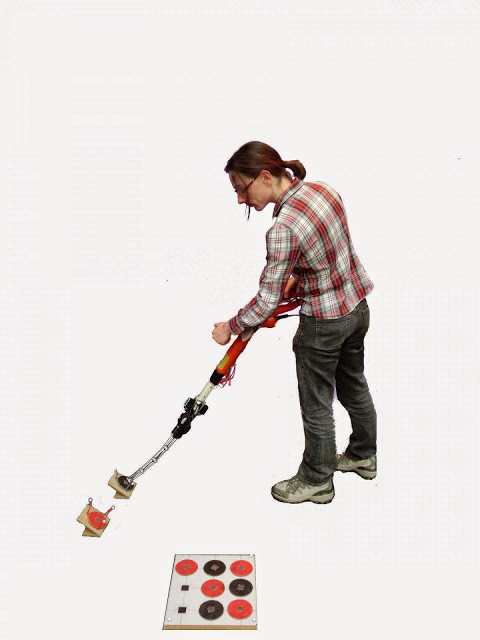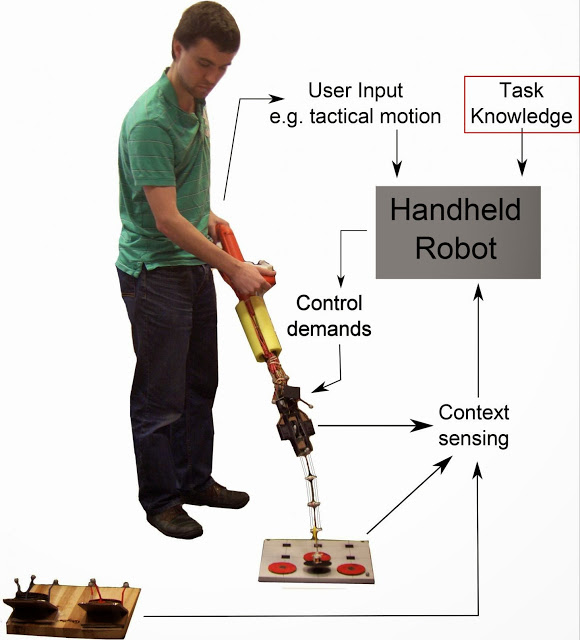| Online: | |
| Visits: | |
| Stories: |

| Story Views | |
| Now: | |
| Last Hour: | |
| Last 24 Hours: | |
| Total: | |
New Tools: Intelligent Handheld Robots Help Inexperienced Uses Complete Jobs Requiring Skills
Credit: University of Bristol
Dr Walterio Mayol-Cuevas and PhD student, Austin Gregg-Smith, from the University’s Department of Computer Science, have been working in the design of robot prototypes as well as in understanding how best to interact with a tool that “knows and acts”. In particular, they have been involved with comparing tools with increasing levels of autonomy.
Compared to other tools such as power tools that have a motor and perhaps some basic sensors, the handheld robots developed at Bristol are designed to have more degrees of motion to allow greater independence from the motions of the user, and importantly, are aware of the steps being carried out. This allows for a new level of co-operation between user and tool, such as the user providing tactical motions or directions and the tool performing the detailed task.
Credit: University of Bristol
Dr Mayol-Cuevas, Reader in Robotics Computer Vision and Mobile Systems, said: “There are three basic levels of autonomy we are considering: no autonomy, semi-autonomous when the robot advises the user but does not act, and fully autonomous when the robot advises and acts even by correcting or refusing to perform incorrect user actions.”
The Bristol team has been studying user’s task performance and user preferences on two generic tasks: pick and drop of different objects to form tile patterns, and aiming in 3D for simulated painting.
Austin Gregg-Smith, a PhD student who is sponsored by the James Dyson Foundation, added: “Our results indicate that users tend to prefer a tool that is fully autonomous and there is evidence of a significant impact on completion time and reduced perceived workload for autonomous handheld. However, users sometimes also expressed how different it is to work with this type of novel robot.”
The researchers are currently investigating further topics on interaction, shared intelligence and new applications for field tasks, and due to the difficulties of starting in a new area of robotics, their robot designs are open source and available via http://www.handheldrobotics.org/
Contacts and sources:
University of Bristol
Source: http://www.ineffableisland.com/2015/05/new-tools-intelligent-handheld-robots.html





